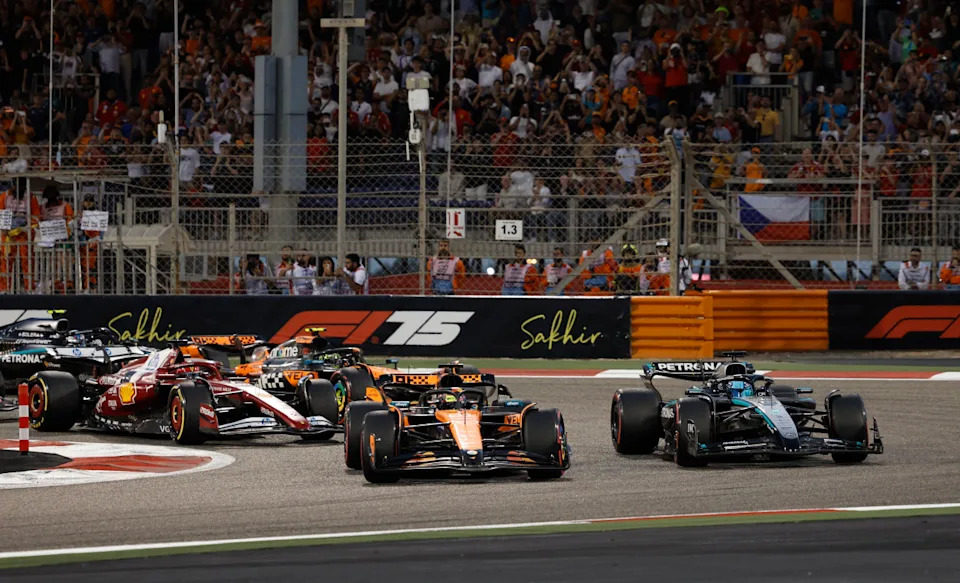The crash is just the start. Behind each wreck and flying particles lies a rapid-fire sequence of selections, know-how, and human intuitionŌĆöall designed to avoid wasting lives within the pinnacle of motorsportŌĆöSystem 1.
As F1 photographer and paddock insider Kym Illman , what unfolds within the seconds after an F1 crash is a coordinated ballet of precision. From the second carbon fibre hits concrete, sensors contained in the automobile measure G-force. If the impression reaches 15Gs or extraŌĆö15 occasions the drive of gravityŌĆöthe motive force is robotically required to go to the medical middle. Even when they hop out trying tremendous, thereŌĆÖs no debate; a medical verify is necessary.
Commercial
Race Management acts inside seconds, analyzing dwell telemetry and onboard footage to evaluate the crash. They resolve whether or not to set off yellow flags, the Digital Security Automobile, deploy the total Security AutomobileŌĆöor, in excessive instances, throw the purple flag.
In the meantime, the F1 medical automobile is already ready with its engine working. Pushed by ex-racers Carl Reindler or Bruno Correia and carrying one in every of three rotating F1 docs, the automobile is kitted with dwell monitoring screens displaying the automobileŌĆÖs place, impression severity, and driver vitals. If dispatched, it tears onto the monitor, chasing seconds that might imply the distinction between life and dying.
On the scene, marshalsŌĆöskilled and preparedŌĆö rush ahead. However they donŌĆÖt act till given flag directions. If wanted, the medical automobile driver jumps in, clearing paths or aiding extraction efforts. Surprisingly, many drivers stroll themselves to the medical automobile until theyŌĆÖre too injuredŌĆöhalf adrenaline, half protocol.
Oscar Piastri leads George Russell on the 2025 Bahrain Grand Prix.Rula Rouhana/Reuters
One vivid instance: Lando NorrisŌĆÖs throughout Saudi Arabian qualifying. Regardless of the brutal drive, he emerged shaken however unhurt. Illman, stationed close by, recalled how NorrisŌĆÖs crew mistakenly rushed to the mistaken medical middle within the confusion. Finally, Norris rode again on a golf cart, sore however joking with McLaren boss Zak Brown earlier than media duties.
Commercial
In uncommon extreme instances, like Mick SchumacherŌĆÖs 2022 Saudi crash, a medical helicopter is on standby to evacuate a driver inside minutes. However in occasions like Shanghai 2017, when fog grounded the chopper, even observe classes had been suspendedŌĆösecurity takes priority over schedule.
Trendy F1 security tech is relentless. Biometric gloves now monitor a driverŌĆÖs oxygen ranges and coronary heart fee. Each Friday, medical crews rehearse necessary extrication drills, simulating emergency rescues to make sure readiness. Failure to fulfill these requirements may end up in critical penalties for any Grand Prix.
As soon as the motive force is secure, consideration turns to the automobile and monitor. Marshals clear particles, usually utilizing cranes or flatbeds. If boundaries are brokenŌĆöas with Sergio PerezŌĆÖs huge Monaco crashŌĆörestore crews leap into motion. In the meantime, rival groups usually dispatch photographers to snap photographs of the uncovered underside of wrecked vehiclesŌĆögleaning valuable tech secrets and techniques. Marshals typically protect these machines from view, though technically, no guidelines prohibit the pictures.
Commercial
Even the medical automobile has its personal quirks. It has a pit crew, burns by way of a number of units of tires every weekend, and in keeping with ReindlerŌĆöpresents an odd thrill of overtaking F1 vehicles on obligation. Not fairly the Grand Pirx podium, however a singular slice of racing glory.
Not all crashes are created equal. A direct wall hit is much extra harmful than a dramatic rollover. As Illman notes, Zhou GuanyuŌĆÖs upside-down slide at Silverstone 2022 regarded terrifying however prompted much less hurt than Alex AlbonŌĆÖs seemingly minor pit wall hit that day.
The game has come a good distance. Within the Nineteen Fifties, 15 drivers died. Every decade introduced enhancements. At present, F1 hasnŌĆÖt misplaced a driver to an on-track incident in almost a decadeŌĆöa testomony to relentless innovation and hard-earned expertise.
Commercial
Due to insiders like Kym Illman, followers can now glimpse what actually occurs after the cameras minimize away. ItŌĆÖs not simply chaosŌĆŗŌĆŗŌĆöitŌĆÖs a high-stakes symphony of bravery, engineering, and split-second choices. And it begins the moment the crash does.










